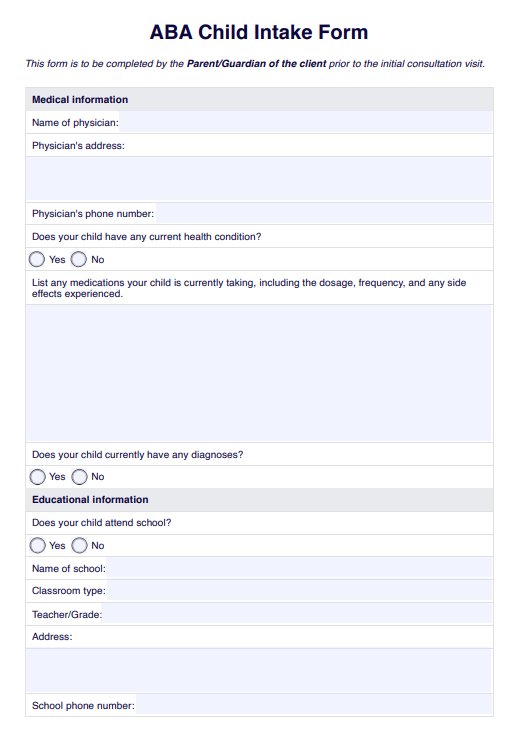The intake form's purpose is to collect essential information about a patient, providing a comprehensive overview of their medical, developmental, educational, and behavioral history. It is crucial in understanding a patient’s unique needs, setting a baseline for measuring progress, defining realistic goals, and facilitating collaborative, integrated care.

ABA Intake Form
Access a free PDF template of an ABA Intake Form to improve your initial touchpoint in the therapeutic process.
ABA Intake Form Template
Commonly asked questions
The importance of the intake form lies in its role as the foundation for individualized treatment plans. It allows us to track progress, inform goal setting, and coordinate care among multiple providers. Additionally, the intake form is a critical document for insurance approval and serves as a platform for initiating effective communication between healthcare providers and families.
The ABA intake process begins with the patient or caregiver filling out the detailed intake form. It involves capturing vital data about the patient's background, relevant history, experiences, and expectations. Once the form is filled out and returned, the practitioner reviews and verifies the information, using it to formulate an effective, personalized treatment plan.
EHR and practice management software
Get started for free
*No credit card required
Free
$0/usd
Unlimited clients
Telehealth
1GB of storage
Client portal text
Automated billing and online payments











